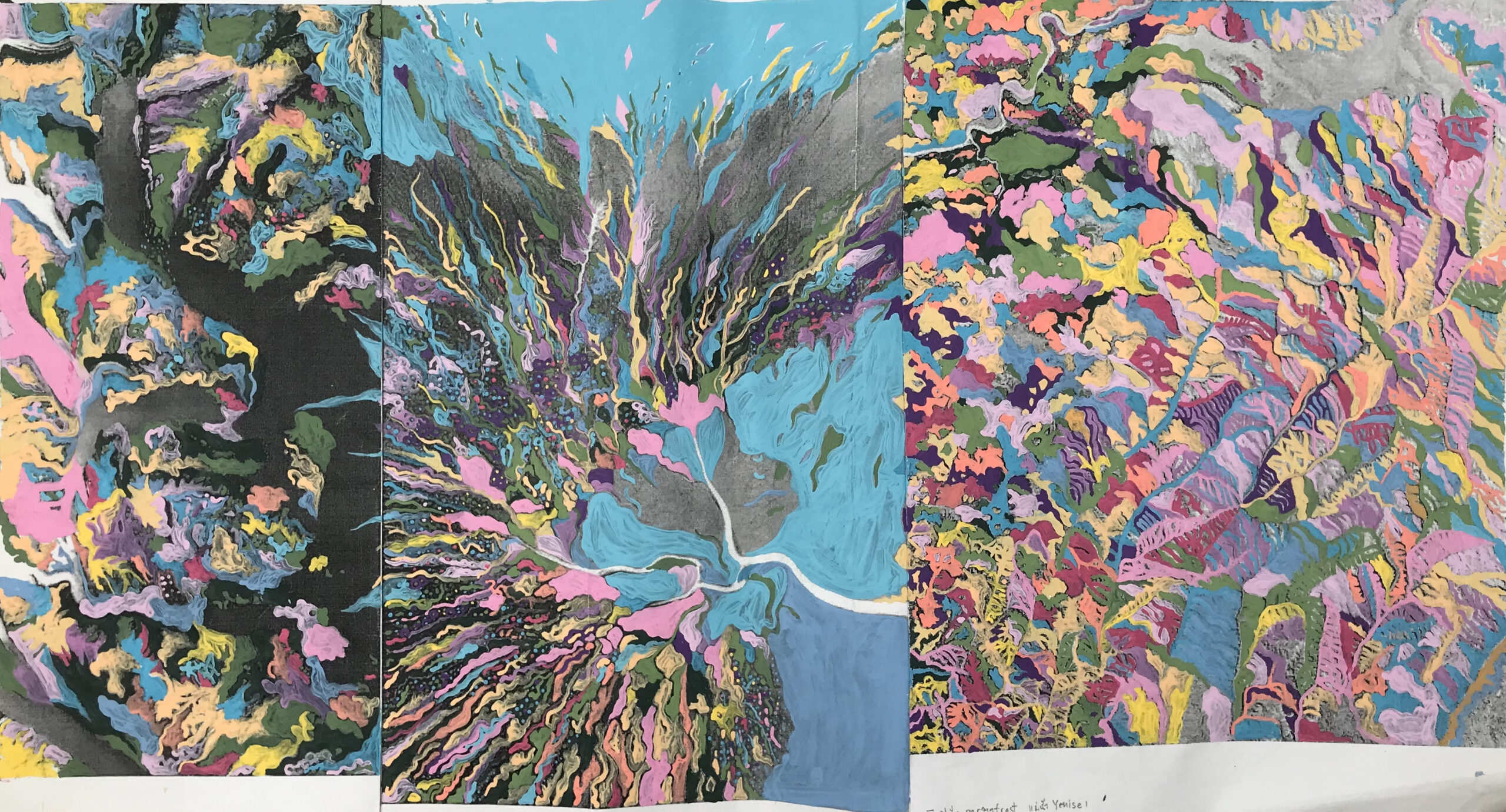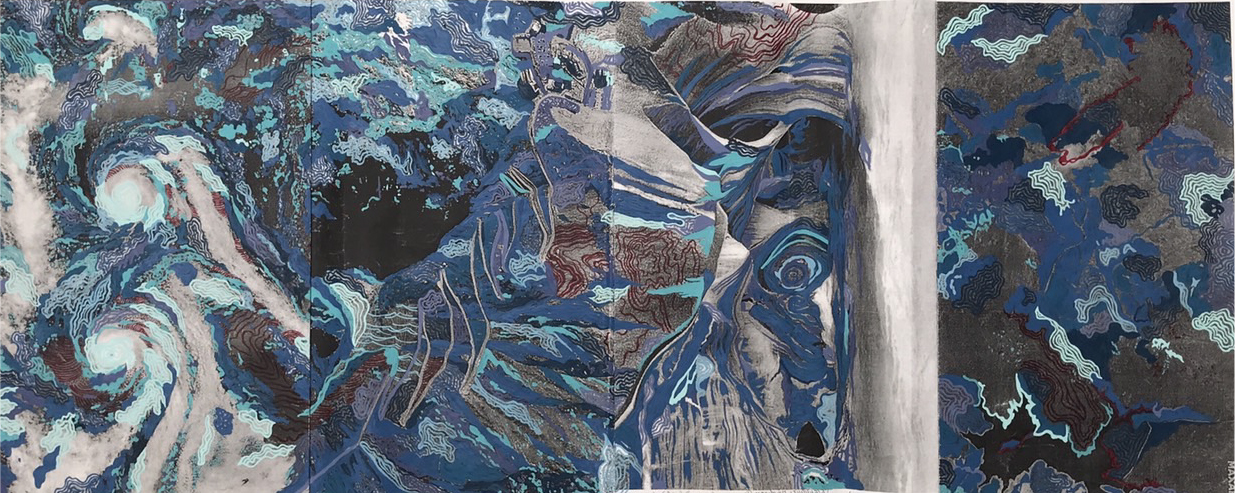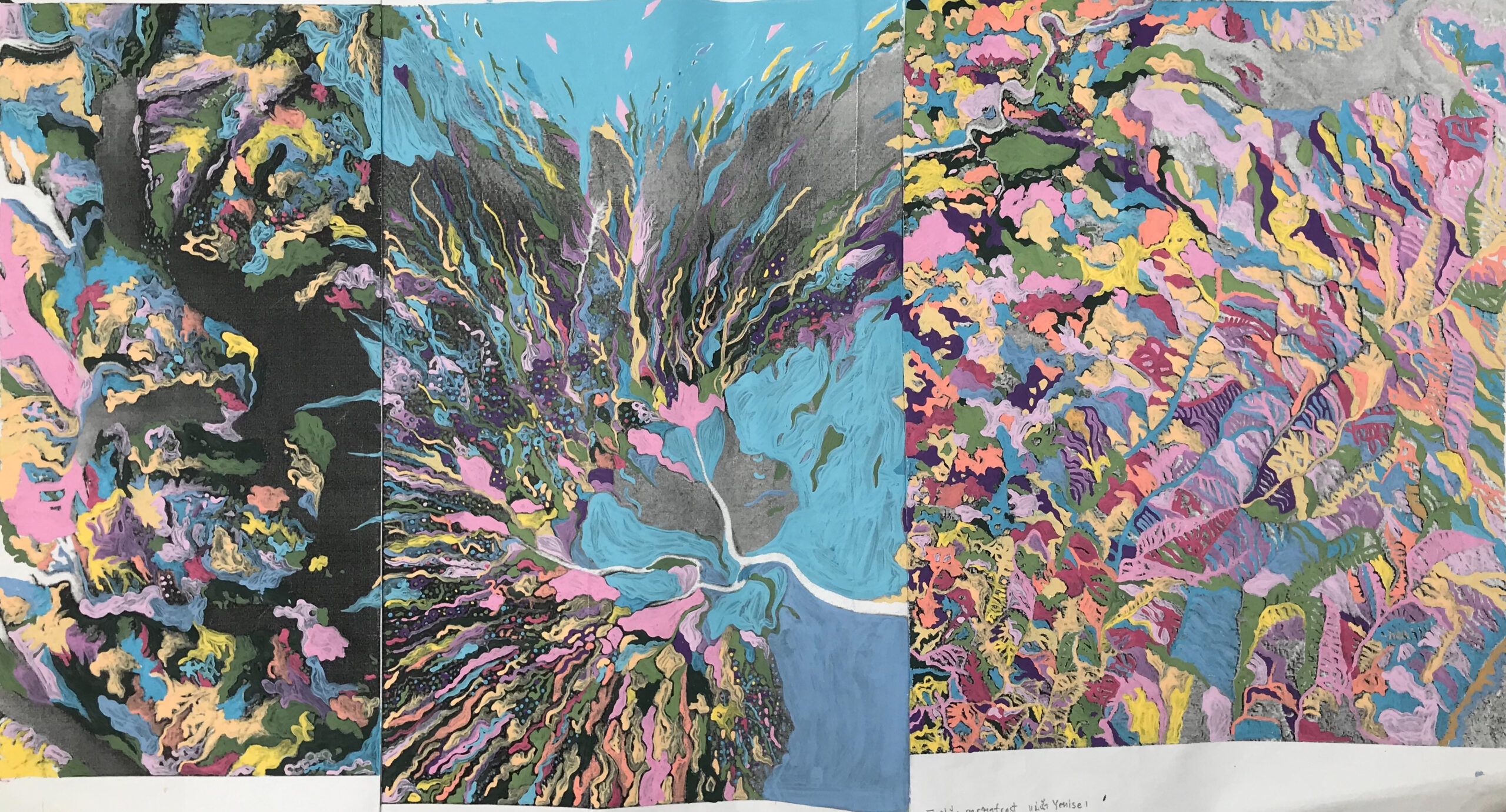
Danaya Chiewwattakee


Abstract :
The Rigveda in its earliest form discusses the origin of the universe, which was initially shrouded in darkness. The first entity to emerge from this darkness was Kama, the desire that brought forth all living beings from the void. Thus, Kama is the primordial force that existed before all else. In Hinduism, Kama is personified as the god of love, Kamadeva, who wields the arrows of love. His vehicle is a parrot, and his bow is made from sugarcane, while his string is composed of a swarm of bees. The five arrows of Kamadeva are tipped with five different types of flowers, each evoking a distinct form of love. (Siripoj Laemmanacharoen, 2025: 71).
The experience of falling in love holds significant meaning for semiologists, as it may be linked to various signs that the lovers interpret and decode from their beloved, such as through eye contact or gestures. However, these signs do not serve as evidence to confirm these scientific facts. Those who are in love, therefore, exist in a state of risk, instability, illusion, and even emotional suffering due to the ambiguity of the situation.
In the digital age, humans increasingly desire to meet in person, to see and touch each other, to be heard, seen, and, most importantly, to be loved. What people truly seek is a relationship that continues over time.
The French philosopher Alain Badiou asserts that love is an event, a scene in which two individuals emerge. Love does not merge the two into one; rather, it allows each person to maintain their own identity while continually transforming throughout the relationship (Kittipol Sarakkanon, 2020: 40). This is because the essence of love lies in risk, change, adventure, impermanence, and swiftness—like a lightning strike, a fleeting moment filled with beauty, akin to a flower blown by the wind until it falls.
Objectives :
- “Enchanted”
The image represents a distant landscape from a satellite view of the permafrost in Siberia along the Yenisei River. The piece is a collage and deconstruction of newly formed shapes, enhanced with lines, colors, dots, brushstroke marks, and overlaps, forming a new imagined landscape. The piece incorporates symbols such as the bow of Cupid, with arrows and scattered flowers, along with representations of love, mystery, and allure: leopards, cheetahs, parrots, bees, and starfish. Lightning bolts, coiling into a spiral, symbolize the power of love’s arrow, passion, and intoxication. The image evokes a sense of movement, resembling a storm that is building up and spreading in all directions.
- “Absorbed”
This work uses a landscape from Lassen Volcanic National Park in the United States and an image of a wildfire in Australia, which are then collaged together. The composition includes elements such as craters, large eyes, and deserts. This piece continues the symbolism from the first work, representing falling in love. The crater symbolizes the enigmatic unknown, with flowers, insects, stars, comets, lightning bolts, and aerial maps hinting at a celestial realm that humanity cannot access. The image depicts the realm of the divine, beyond human comprehension.
Conceptual Framework :
The first section of the image is an abstract background, while the overlaid elements take on a surrealistic quality, appearing to float, swirl, and disperse. From a distance, the image is cohesive, but upon closer inspection, overlapping symbols and hidden motifs emerge. The proportions defy traditional perspective, with a parrot almost the same size as a tiger, and starfish and plankton depicted in oversized forms, while lightning bolts appear small. The collage is created from various directions, with the elements circulating and spiraling, disregarding time, space, accuracy, and realism.
Process / Methodology :
- Studied infrared satellite imagery, Earth views, permafrost in Siberia, the Yenisei River, Lassen Volcanic National Park in the United States, and wildfire imagery from Australia.
- Examined images of comets, lightning tornadoes, aerial map line drawings, cloud formations, and stars.
- Studied pieces of artworks including Art Forms in Nature, Plankton Sea Biology, The Art and Science by Ernst Haeckel, and Masterpieces Botanical Illustrations. As well as ancient flowers, insects, bees, parrots, leopards, cheetahs, and starfish.
- The landscape images were digitally manipulated and painted over to create new textures and compositions, printed onto canvas as a background, with additional embroidery of flowers, insects, tigers, bees, parrots, starfish, arrows, stars, cloud formations, comets, and unicellular organisms, layered to suggest floating, swirling, and moving elements in dispersed directions.
Techniques and Materials :
Acrylic paint on xerox paper, inkjet printing on canvas with layered embroidery.
Result / Conclusion :
This series consists of two interconnected pieces. The first work, Enchanted, was inspired by the Hindu deity Cupid, who shoots five types of flower arrows, each representing a different form of love:
- The lotus flower arrow represents intense, overwhelming love, symbolized by storm clouds.
- The mango flower arrow symbolizes warm, affectionate love, represented by parrots.
- The frangipani flower arrow symbolizes gentle, cool love, represented by starfish.
- The ashoka flower arrow represents passionate, burning love, symbolized by leopards and cheetahs.
- The jasmine flower arrow symbolizes love that fades into unfulfilled sorrow, represented by thorny flowers.
The second piece, Absorbed, uses a void as a symbol of someone trapped in the depths of love, with eyes representing the observer. The comet and cloud formations symbolize the unattainable, while lightning bolts convey sudden, unpredictable events. Falling flowers represent the beauty found in the moments of love.
These two pieces explore the reversal of texture usage, employing paint over collaged elements, leaving brushstroke traces that gradually transform into a new landscape. The inkjet print blurs the real traces, creating an illusion of depth and texture. The embroidery overlays do not adhere to traditional perspective rules; some elements are hidden unless closely observed, revealing themselves only with time, which is a central theme of the work.
One challenge faced was to separate the piece into two parts: the background, which cannot be painted over with layering due to adhesion issues. While other techniques may work, experimentation is required to develop methods for combining materials effectively, reducing realism, and creating new artistic techniques.
References :
- Surawong Sripen, 2007, เทวกำเนิด, Amornit Printing & Publishing, Bangkok.
- Kittipol Sarakkanon, 2020, In THEORIES: ในความรัก เราต่างเป็นนักทฤษฎี, Salmon Publishing, Bangkok.
- Siripoj Laemananacharoen, 2568 กามเทพในศาสนาพราหมณ์-ฮินดูและพระพุทธศาสนา, Matichon Weekly, February 7-13, 2025, Vol. 45, Issue 2321.
- H. Walter Lack, 2001, Garden Eden, TASCHEN, Italy.
- Brianna Wiest, 2003, The Mountain is You.
- https://www.Lesa.biz/earth/atwosphere/phenomenon
- https://www.nstda.or.th/th/instra-knowLeadge/3011-accrLaphotograph
- https://vivaranastory.wordpress.com